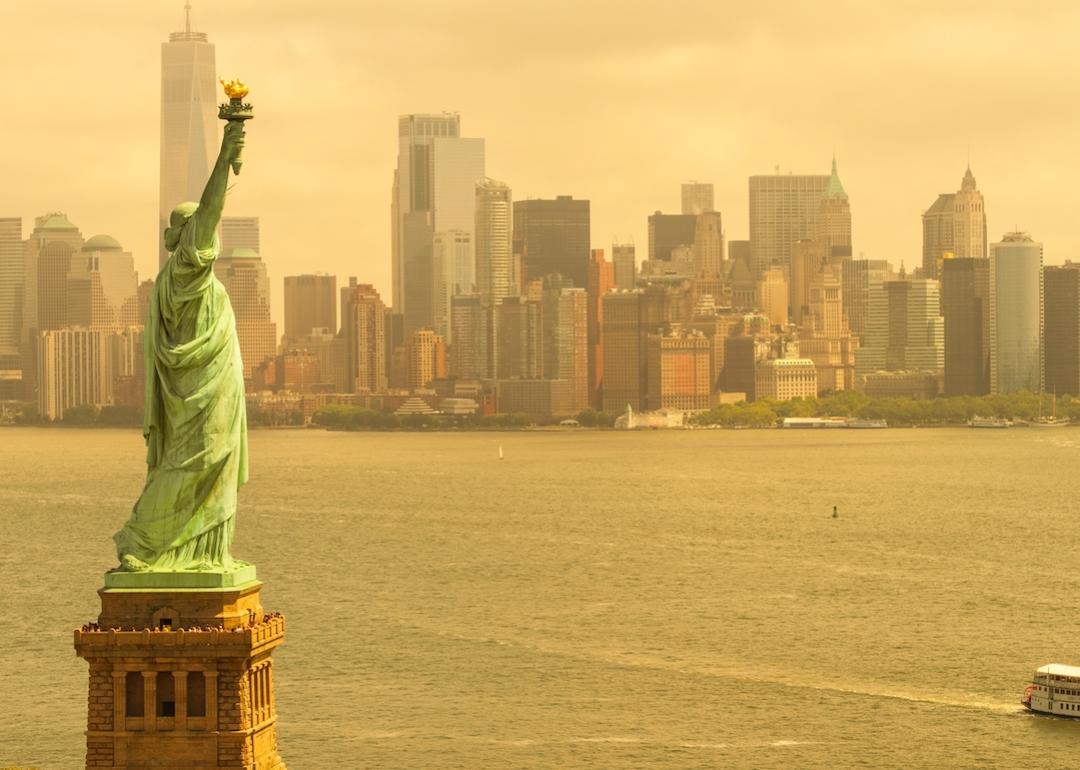
Most humid cities in America
Shifts in humidity aren't uncommon, and minor fluctuations can quickly turn a leisurely walk in the park into a hot, sweaty ordeal. And as temperatures rise due to global warming, we'll likely see much higher humidity levels around the world. 2024, for example, went down in history as having the most humid summer on record.
Seasonal temperatures, geography, and infrastructure are all factors that make an area humid, and climate change also affects global humidity levels in a myriad of harmful ways. Urbanization, deforestation, and a shift in irrigation practices have caused humidity to increase, with consequences for cities and the people who inhabit them. A study published in the journal Science of the Total Environment in February 2025 found that humidity significantly amplifies the effects of heat waves, creating greater risks to human health. And with AccuWeather predicting above-average temperatures and high humidity across much of the United States in the summer of 2025, we may soon see these impacts up close and personal. One record-breaking heat wave has already been logged at the end of June 2025, sending heat indices soaring into the triple digits across the central and eastern U.S.
As heat and humidity continue to surge in America, Stacker analyzed data from the NOAA's Comparative Climatic Data to find the most humid cities in America. The Comparative Climate database uses data from land-based weather stations and contains data from the 1950s through 2018. Humidity was measured using relative humidity, defined as "a percentage measure of the amount of moisture in the air compared to the maximum amount of moisture the air can hold at the same temperature and pressure." Stacker averaged relative humidity from both morning and afternoon measurements to rank 20 American cities. Places with less than 50,000 people, according to the Census Bureau, were removed.
A city's proximity to water increases the amount of moisture in the air. Desert cities like Las Vegas have low humidity levels, while their coastal counterparts—like a particularly popular vacation spot in Florida—are listed here among America's most humid cities. Cities that see hot summers and cold winters experience the effects of added moisture in the air. In warmer temperatures, weather reports refer to the combination of air temperature and relative humidity as the "heat index." As the heat and relative humidity rise, they drive up the heat index, causing it to feel hotter outside.
Cities usually experience higher humidity than rural areas. In the summers, air conditioners and other machinery generate heat, while buildings absorb it. In rural areas with more greenery, heat evaporates in the evenings to keep the air cooler. Concrete in urban centers doesn't allow for proper evaporation, leading to more humidity in cities.
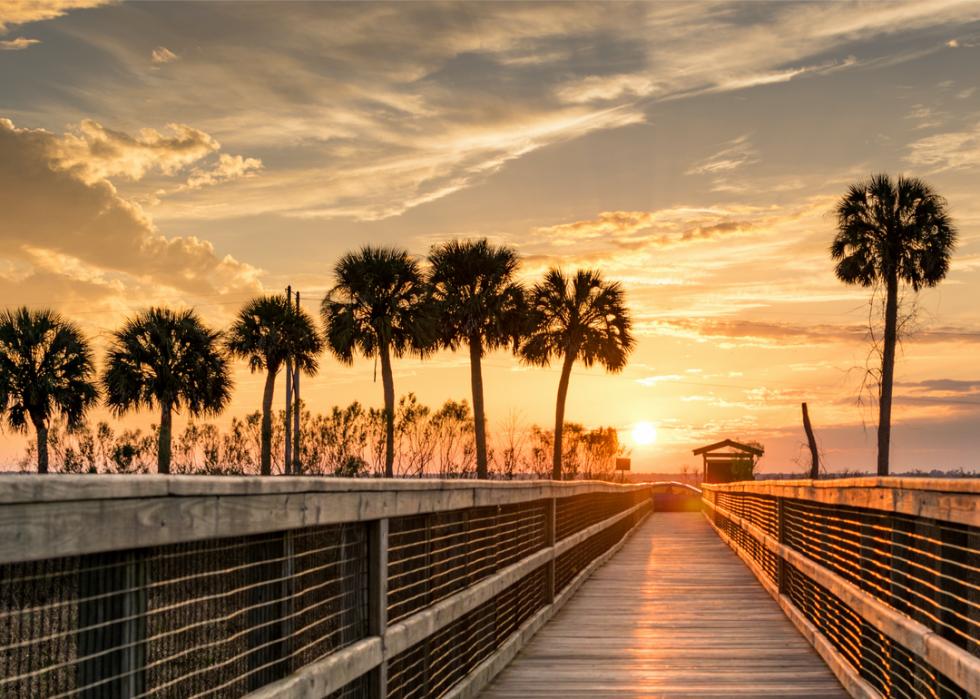
#20. Gainesville, Florida
- Average relative humidity: 72.5%
- Morning average: 82.3%
- Afternoon average: 51.6%
Surrounded by water, the Florida peninsula is frequently impacted by extreme weather conditions like hurricanes during the summer months. According to a 2018 study by climate researchers, heat waves and intense temperatures are becoming more frequent in Florida cities, and Gainesville, in the heart of the peninsula, is no exception. Home to the University of Florida, vacationers and snowbirds are encouraged to visit cities like Gainesville during the winter months, as the temperatures dip and weather patterns become more manageable.
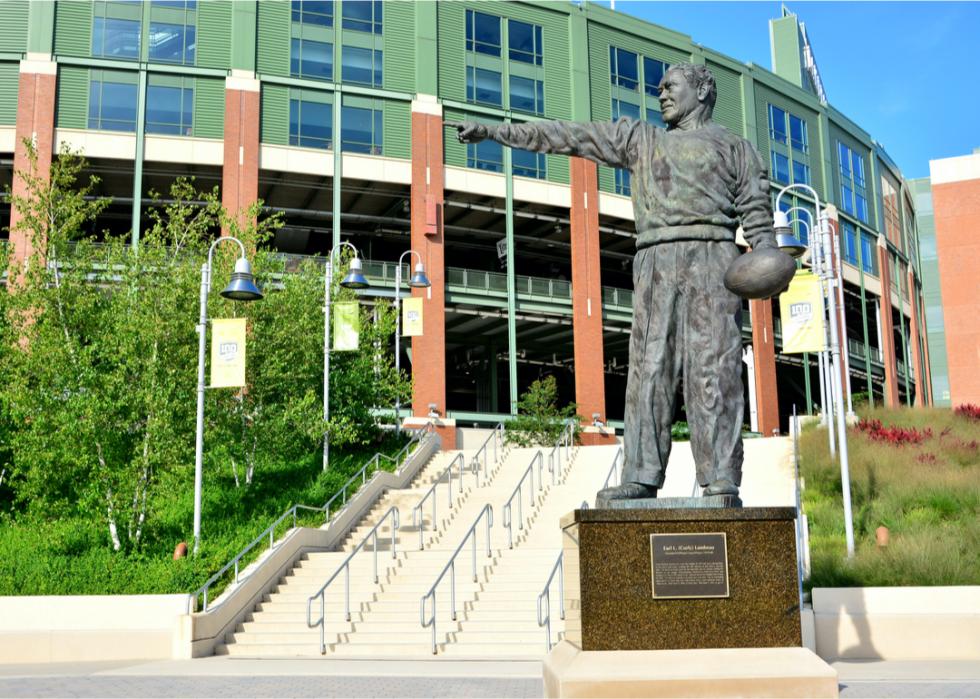
#19. Green Bay, Wisconsin
- Average relative humidity: 72.8%
- Morning average: 76.4%
- Afternoon average: 57.9%
At the entrance of the Fox River, Green Bay, Wisconsin's humid continental climate sees severe and extreme variances in temperatures between seasons. In June 2021, the city experienced its earliest heat wave since 1988. With 90 F heat over five consecutive days, Green Bay has been heavily impacted by the humidity. A recent storm downed the power across Wisconsin, while a tornado was in effect in and around Green Bay in August 2021. Consistently heightened weather conditions signal a larger issue related to climate change. Home of the National Football League's Green Bay Packers, the city is a trading and manufacturing hub in northeastern Wisconsin.
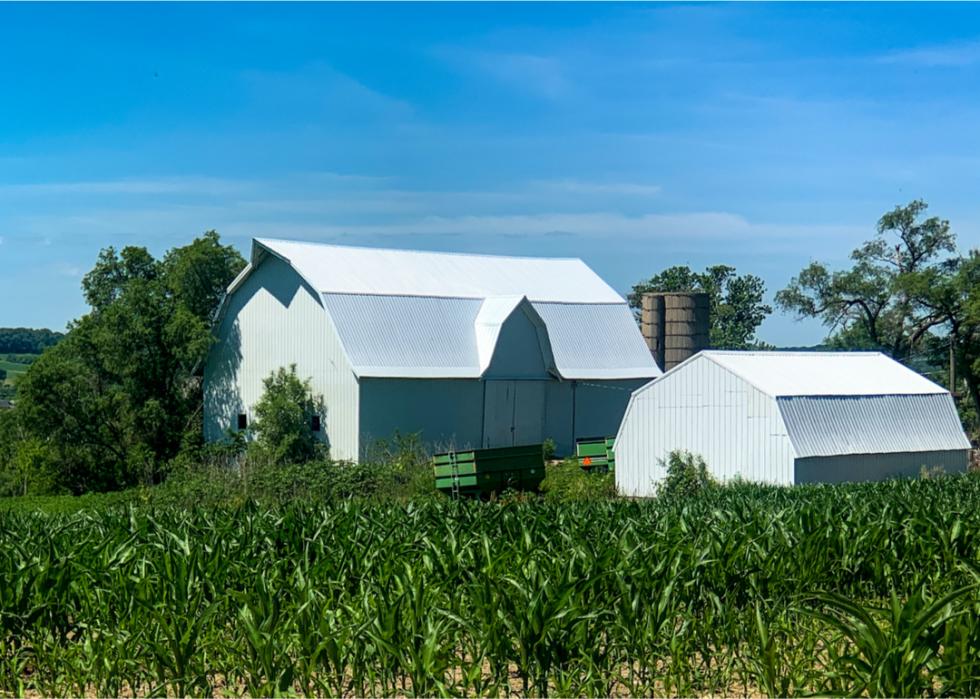
#18. Dubuque, Iowa
- Average relative humidity: 72.8%
- Morning average: 76.4%
- Afternoon average: 58%
Dubuque, Iowa, sits on the eastern edge of the state of Iowa, where extreme weather conditions have become common. The river city has seen a tornado warning or two, and thunderstorms can generate humid air masses offering little respite from the heat in the summer months. Dubuque is situated by the Iowa-Wisconsin border along the banks of the Mississippi River. Half an hour down the road, in tiny Dyersville, cinephiles and baseball enthusiasts flock to the corn fields that were the backdrop of Kevin Costner's "Field of Dreams."
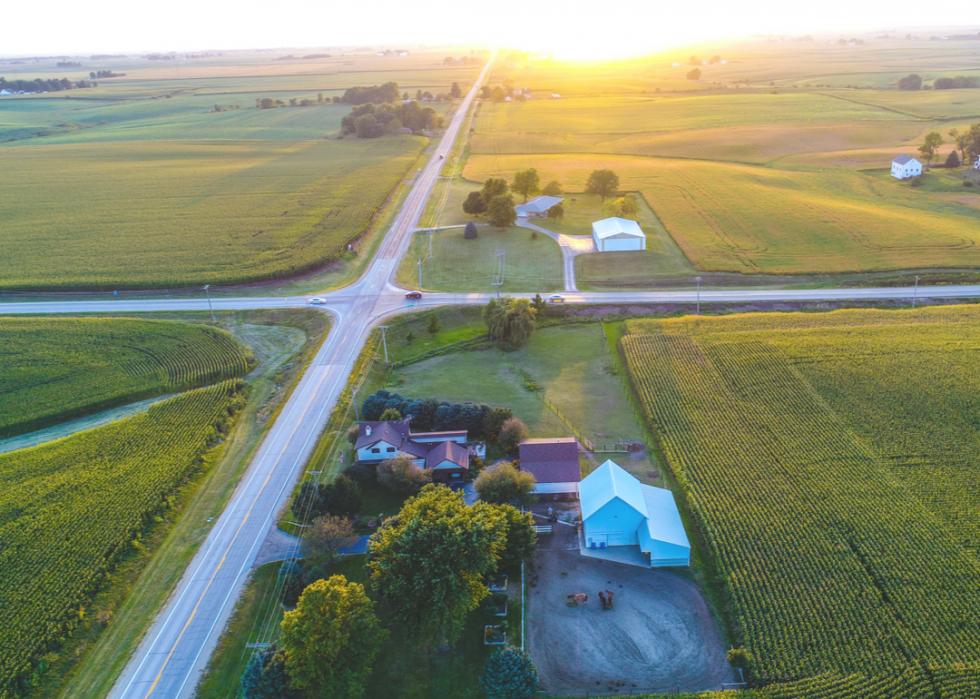
#17. Waterloo, Iowa
- Average relative humidity: 73%
- Morning average: 77.8%
- Afternoon average: 56.9%
About 92 miles down the road from Dubuque is the city of Waterloo, Iowa. The city has seen the heat index rise to extreme levels, triggering the media to issue heat warnings and suggest ways to avoid heat stroke. Iowa is the leading producer of corn in the U.S., and its corn fields have something to do with the humidity levels in its eastern cities. The amount of moisture corn releases into the atmosphere coupled with the southerly winds from the Gulf of Mexico are what make Iowa so humid. Part of Black Hawk County, Iowa's Waterloo is home to the ever-popular Iowa Irish Fest.
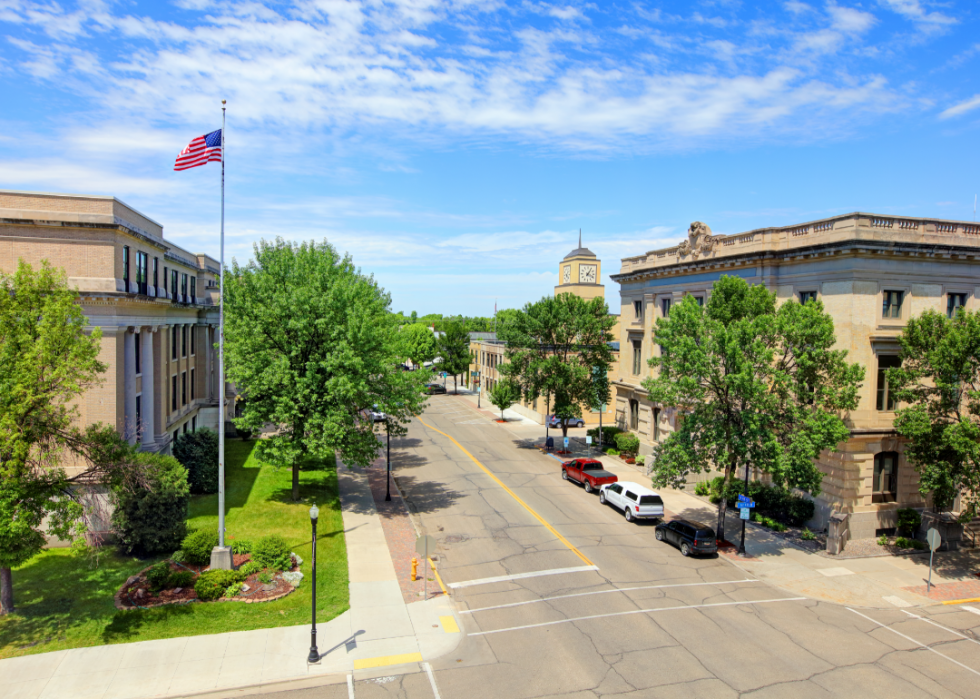
#16. Grand Forks, North Dakota
- Average relative humidity: 73.1%
- Morning average: 76.8%
- Afternoon average: 58.2%
Located in the Red River Valley, Grand Forks, North Dakota, is a trade and agricultural center that sits along the border of Minnesota. With each snowmelt comes the North Plains' usual wet cycle. This has been contributing to more frequent floods in recent years. The warmer temperatures, wetter conditions, and climate-related factors like urbanization have caused the moisture in the air to stay put. Excess moisture has increased the relative humidity of this North Dakotan city.
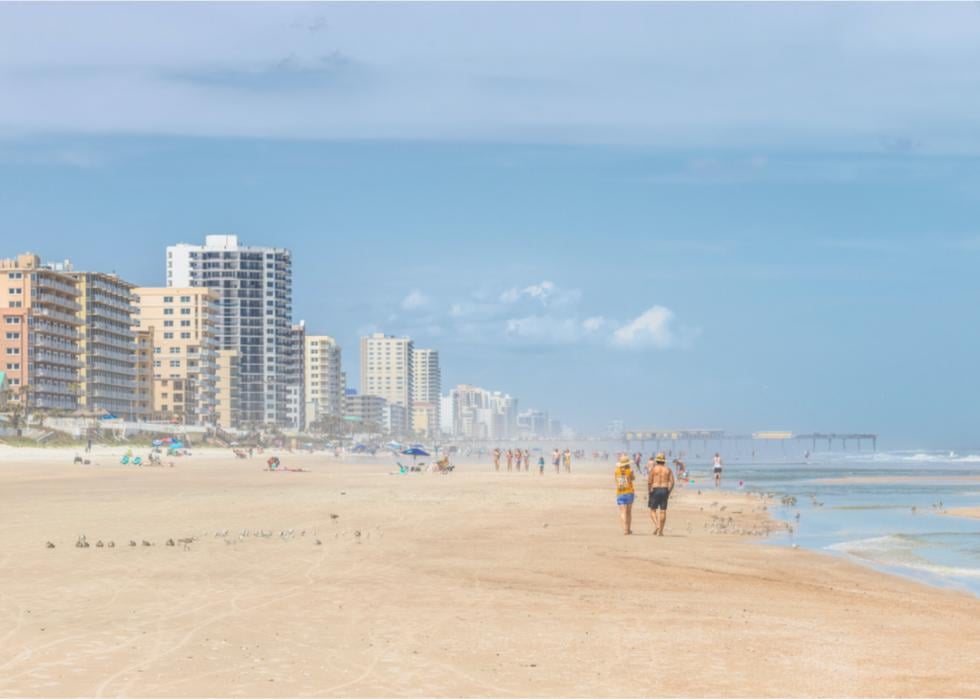
#14 (tie). Daytona Beach, Florida
- Average relative humidity: 73.3%
- Morning average: 80%
- Afternoon average: 55.3%
In the winter months, temperatures in Daytona Beach, Florida, hover around 70 F. Temperatures spike up to around 90 F in the summer months. It has been known to break heat records, placing it among the most humid cities in the country. Lauded for its sprawling sands, Daytona Beach is home to the World's Most Famous Beach. This coastal city became a mecca for racing enthusiasts when NASCAR's Daytona 500 picked up speed in the 1950s.
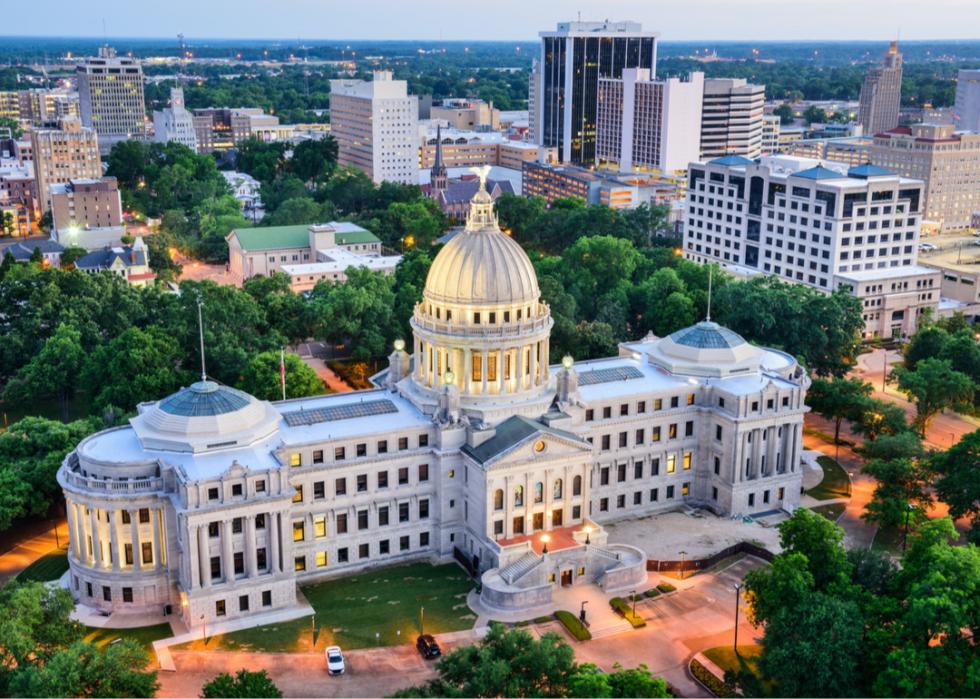
#14 (tie). Jackson, Mississippi
- Average relative humidity: 73.3%
- Morning average: 82.7%
- Afternoon average: 52.6%
In the interior of Mississippi, Jackson sits by the Ross Barnett Reservoir. The region is familiar with extreme weather conditions like floods and damaging thunderstorms, which occur year round, according to the National Weather Service. Summers in Mississippi come part and parcel with the heat. It's when extreme heat kicks in that cities like Jackson see spikes in humidity levels. With deadly heat warnings, local media urge residents to find ways to avoid heat-related illnesses and keep hydrated.
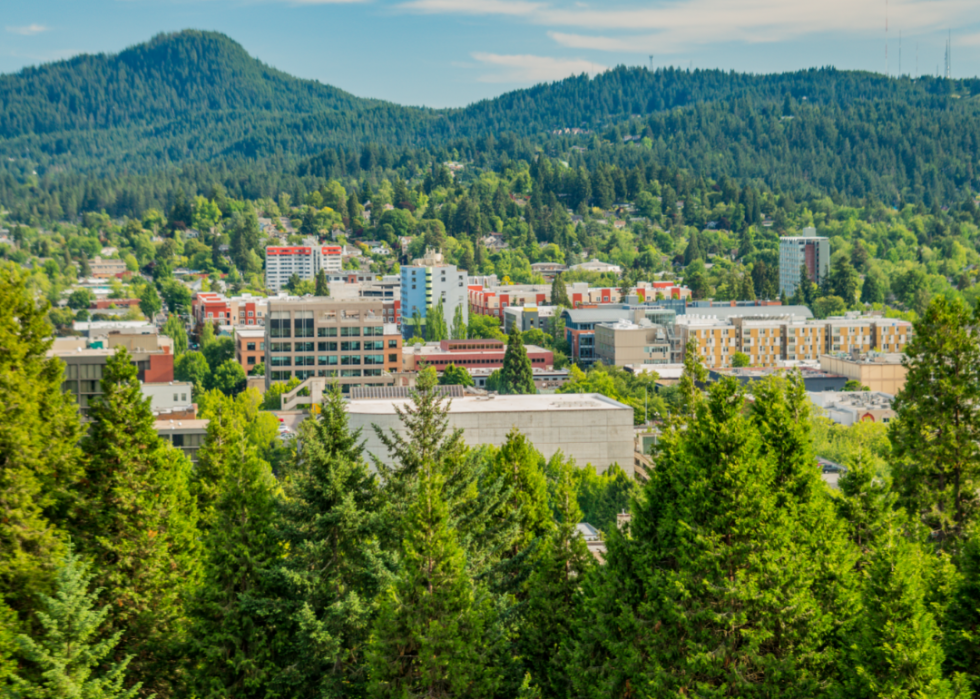
#13. Eugene, Oregon
- Average relative humidity: 73.5%
- Morning average: 79.4%
- Afternoon average: 56.4%
The causes of humidity differ depending on whether a city is located on the West or East Coast. Nestled in the greenery of the Willamette Valley, Eugene sits on the Willamette River in the coastal state of Oregon. The West Coast can be less humid than the Eastern Seaboard, and Eugene benefits from the cooling effect of the Pacific Ocean. As far as West Coast cities go, Eugene has been able to avoid the intense weather patterns that have impacted other cities as a result of the climate crisis. However, this could change with more frequent excessive heat warnings. With rising temperatures of up to 105 F in the summer months, climate change in Oregon has had fatal consequences.
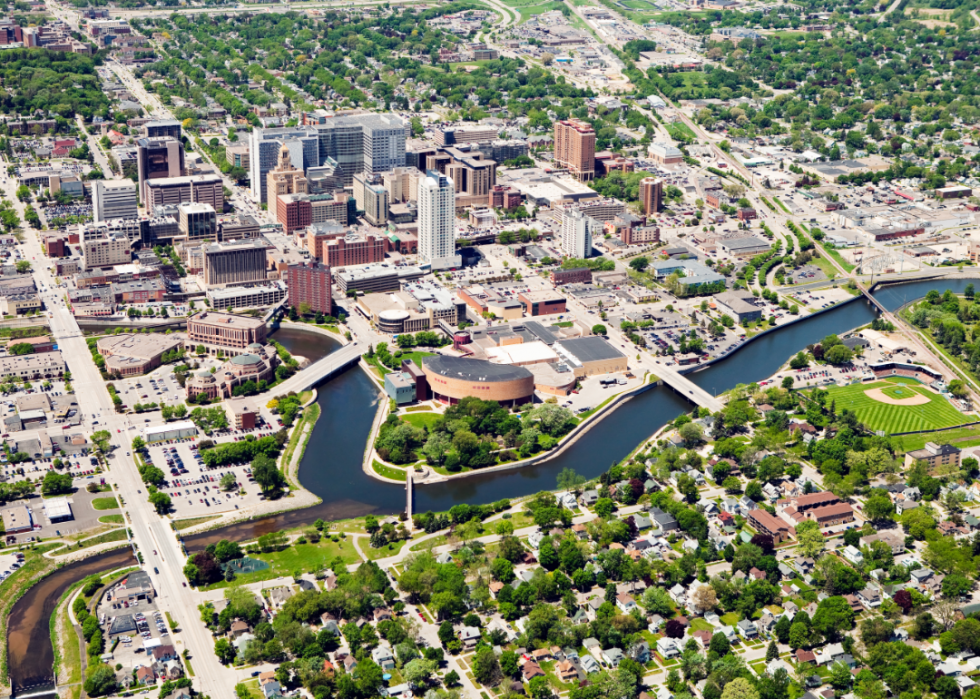
#12. Rochester, Minnesota
- Average relative humidity: 73.8%
- Morning average: 76.9%
- Afternoon average: 59.3%
An hour and a half down the road from Minneapolis, the city of Rochester sits in the south of Minnesota. With a humid climate, the residents of Rochester feel the intense impact of its cold winters and hot summers. Rochester has begun to see the effects of climate change in significant ways. The rise in temperature has led to an increase in air vapor. While that doesn't seem dire, when the effects of climate change beyond the Minnesota border start to spill into the state, it can become problematic. The increase in the number of wildfires that have torn through the country in recent years have undoubtedly impacted conditions in southeast Minnesota.
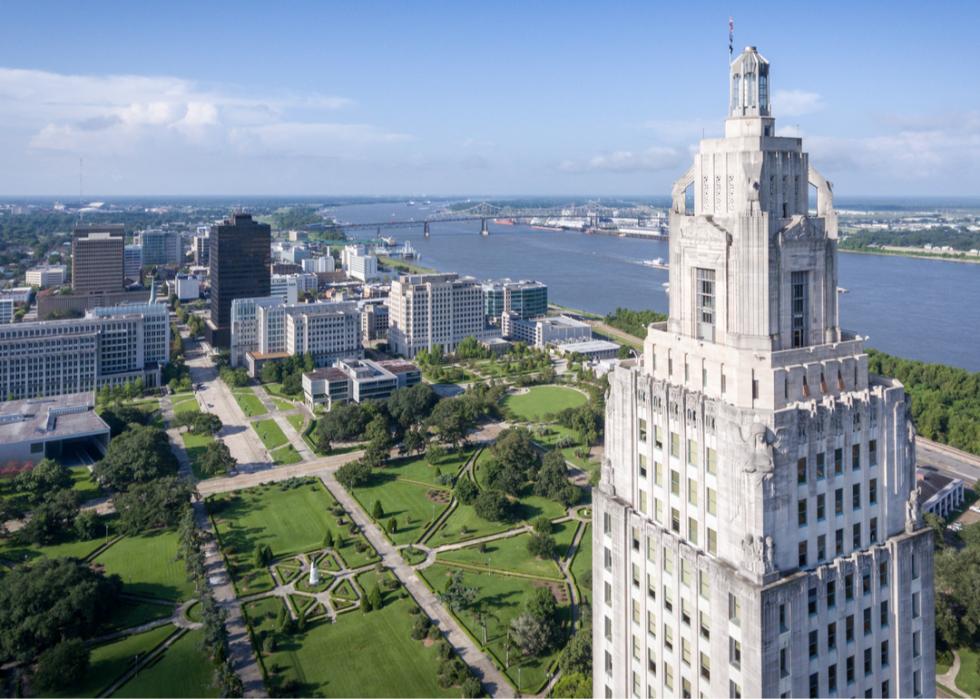
#11. Baton Rouge, Louisiana
- Average relative humidity: 73.8%
- Morning average: 82.2%
- Afternoon average: 54.1%
More humid than its eastern counterparts in Florida, Louisiana's geography has a bearing on its humidity levels. With light summer winds and sky-high humidity, Louisiana has the most oppressive heat, according to a 2018 Forbes report. Baton Rouge, Louisiana, has had to face the effects of a warming planet head-on in recent years. Floods, intense rainfall, and seasonal humidity have all contributed to the city's extreme weather conditions. French for "the red stick city," Baton Rouge is the state capital, and this southern city is home to Louisiana State University and boasts views of the winding Mississippi River.
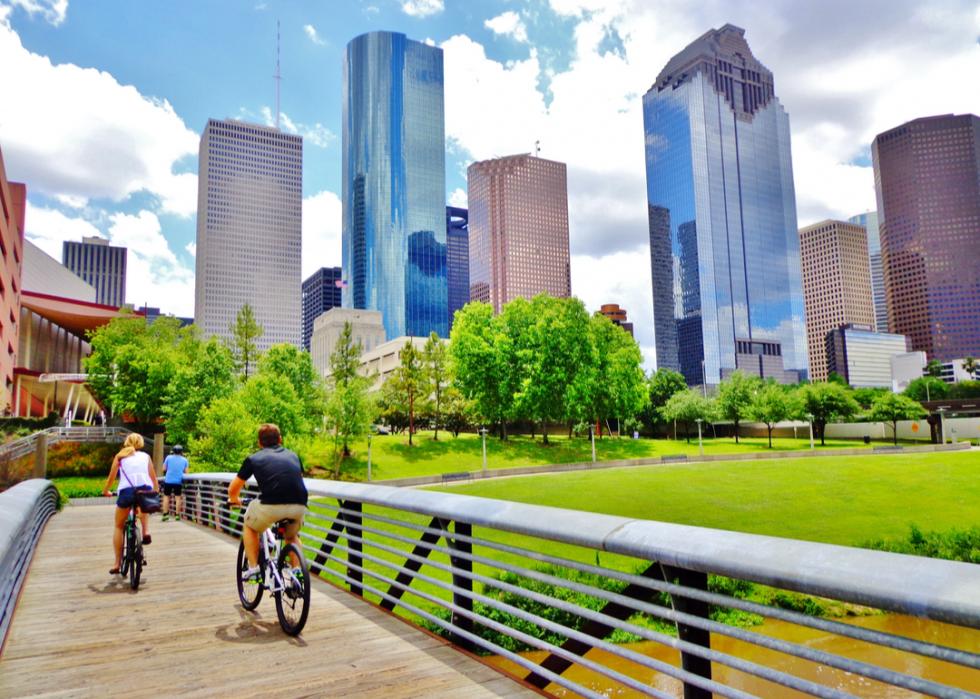
#10. Houston
- Average relative humidity: 74.1%
- Morning average: 82.6%
- Afternoon average: 54.2%
Surviving the devastating effects of Hurricane Harvey in 2017, followed by a flash-freeze in February 2021, Texans have experienced some of the country's most intense weather events. The effects of climate change continue to play out in a variety of destructive ways. With efforts to combat the heat and official heat advisories, Houston is taking measures to protect its people from the health consequences of rising relative humidity. Houston is quite literally an energy capital. This Texan city is the U.S. headquarters for the energy sector and employs a significant number of employees in oil and gas.
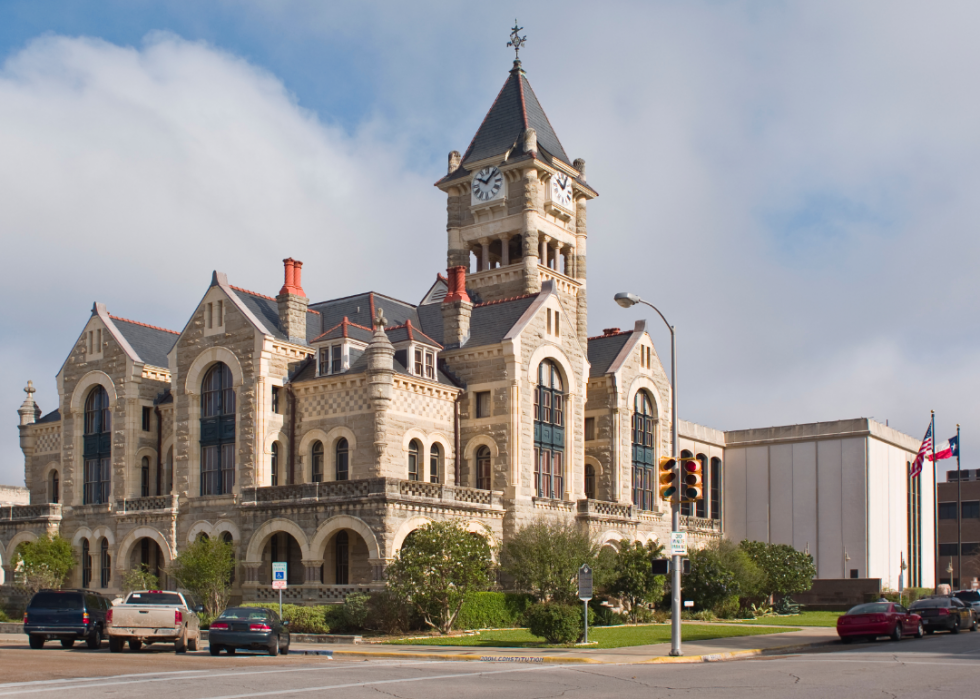
#9. Victoria, Texas
- Average relative humidity: 74.6%
- Morning average: 83.1%
- Afternoon average: 54.6%
Between Houston and San Antonio, Texas, by the shores of the Gulf of Mexico, the city of Victoria is seated along the Guadalupe River. Moisture surging up from the Gulf is the primary cause of high humidity levels in the region. This Texan city has seen heat indexes skyrocket to triple digits in June 2021. The Guadalupe River is also a source of moisture, and causes moderate flooding. The planet's rising temperatures have clearly had an effect on this city's humidity levels in measurable ways.
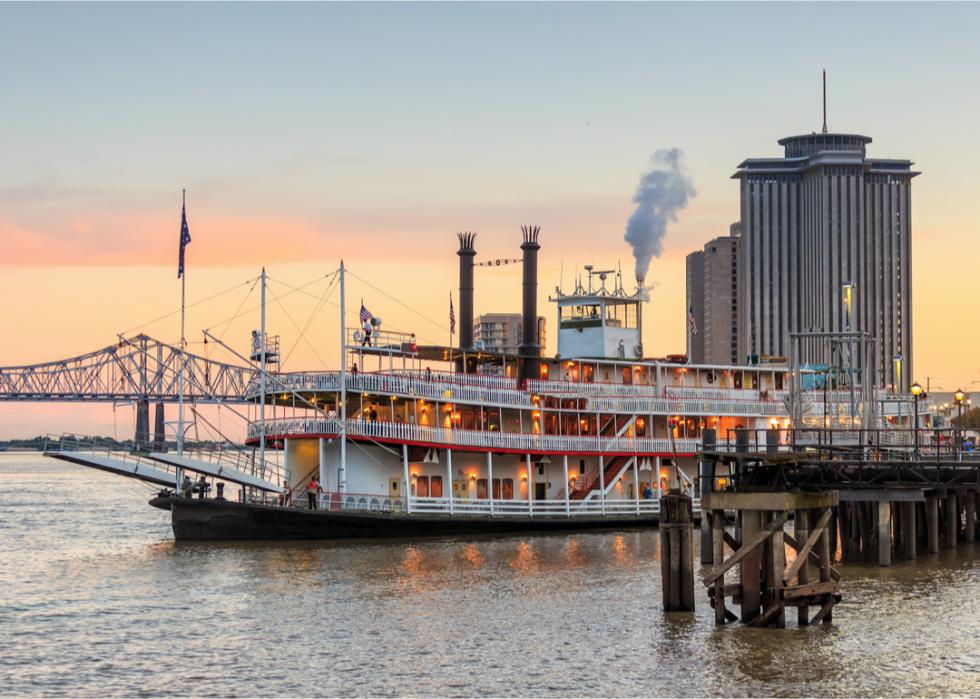
#8. New Orleans
- Average relative humidity: 74.6%
- Morning average: 80.2%
- Afternoon average: 57.5%
In 2005, Hurricane Katrina wreaked havoc on the city of New Orleans and its livelihood. Climate change has caused nighttime temperatures in the summer to rise at alarming rates, even faster than daytime highs. Prolonged heat waves led to a relative humidity that won't let up. With only 50% of the city above sea level, it is consistently left vulnerable to the negative effects of heat and extreme weather conditions. The site of annual Mardi Gras celebrations and the birthplace of jazz, New Orleans is the largest city in Louisiana.
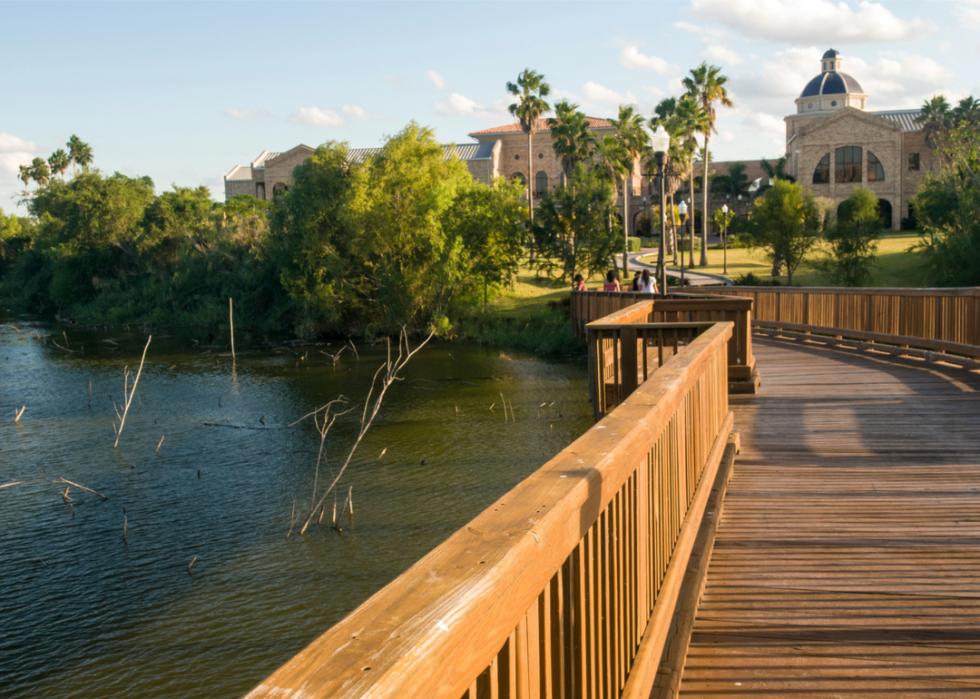
#7. Brownsville, Texas
- Average relative humidity: 74.8%
- Morning average: 82.8%
- Afternoon average: 55.4%
While Death Valley, Las Vegas, and Phoenix make it into the "triple-digit club" exceeding temperatures of 100 F each year, the heat is dryer than the vapor-heavy humidity in the Southern states like Texas and Louisiana. The moisture may keep the heat in the double digits, but the "feels like" temperatures tend to send the heat index over 100 F on more than one occasion in the warmer months. Brownsville is situated in South Texas along the border of Mexico, right on the western Gulf Coast. The highest triple-digit temperatures it recorded were 12 days in 2019.
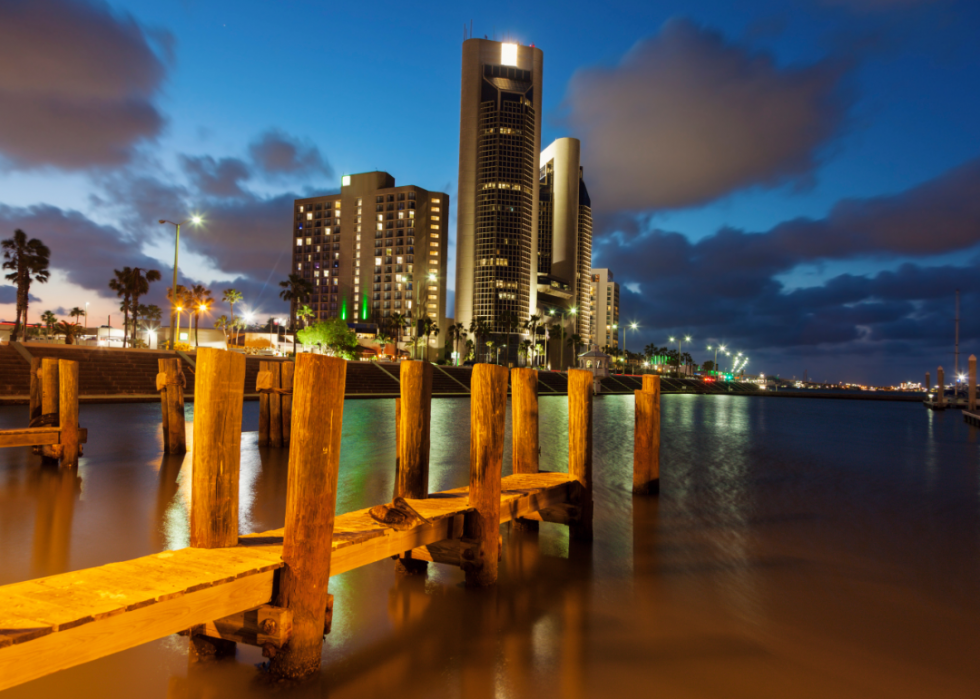
#6. Corpus Christi, Texas
- Average relative humidity: 75.2%
- Morning average: 82.3%
- Afternoon average: 56.5%
Its position along the shores of Texas directly exposes Corpus Christi to tropical moisture pouring in from the Gulf of Mexico. The heat index of relative humidity combined with hot temperatures drove Corpus Christi's heat index to 108 F in July 2021. Media outlets warned gardeners and people working outdoors to hydrate and take frequent breaks from the sun. The frequency of floods has been a direct result of climate change. While weather conditions continue to ravage the coast, Corpus Christi continues to sink.
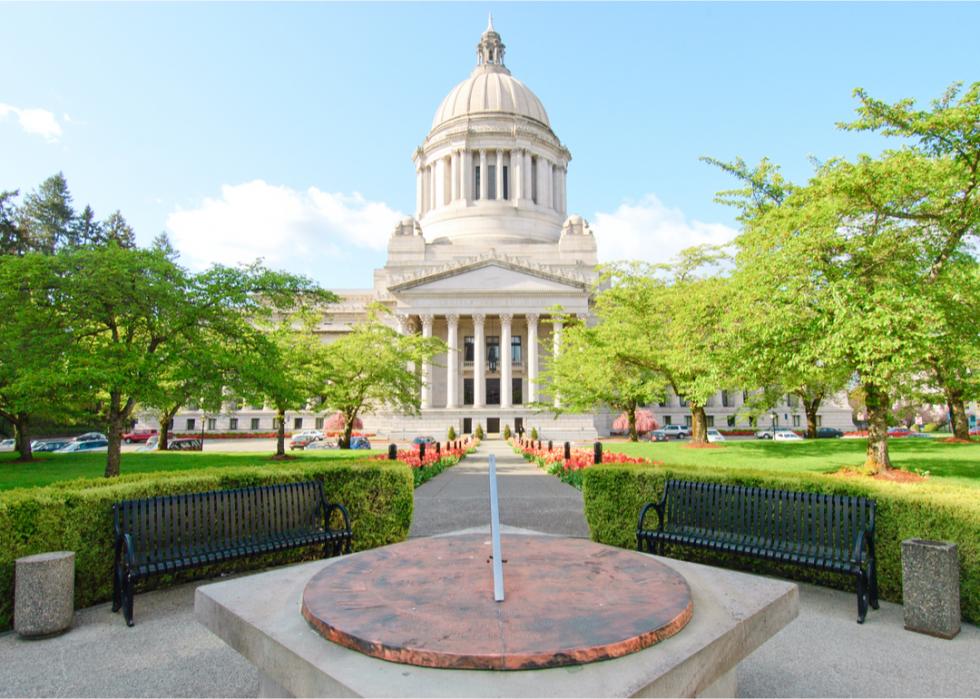
#5. Olympia, Washington
- Average relative humidity: 75.9%
- Morning average: 81.4%
- Afternoon average: 58.8%
A city in the Pacific Northwest, Olympia is flanked by lakes and forests in the state of Washington. The capital of Puget Sound, Olympia is not accustomed to the humid heat waves that most commonly blaze through the Southern and Eastern Seaboard during the summer months. However, in recent years, the West Coast's destructive wildfires have caused evacuations, power outages, and poor air quality. This has signalled a change in the climate of the region. Early in the summer of 2021, the city announced an extreme heat watch when triple-digit, record-breaking temperatures were expected. Evening temperatures failed to drop enough to cool the city down, driving up humidity with no end in sight.
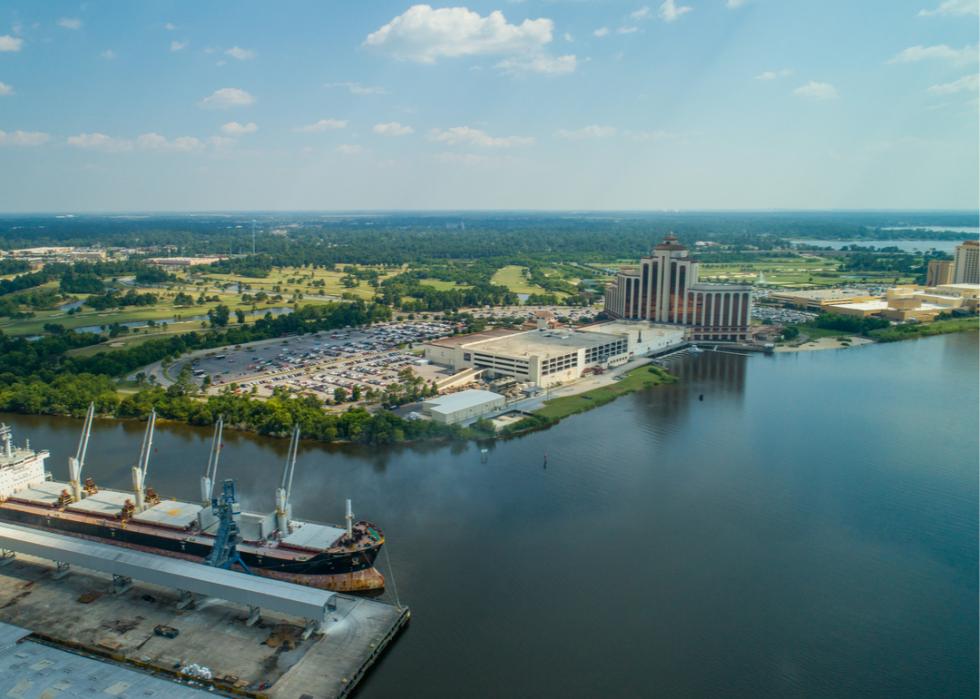
#4. Lake Charles, Louisiana
- Average relative humidity: 76.0%
- Morning average: 83.2%
- Afternoon average: 57.0%
Louisiana's subtropical climate is enough to send heat waves coursing through the state on any given day in the summer months. Combined with the stream of warm southern winds from the Gulf of Mexico, though, the humidity can hit the roof. Tourism in coastal cities like Lake Charles extends to fishing and other outdoor activities. In cities like this one, the effects of climate change go beyond the obvious dangers of flooding and storms. Warmer summers can make it nearly impossible to remain outdoors, while the rising temperatures can lead to fish kills or harmful algae blooms, according to the United States Environmental Protection Agency.
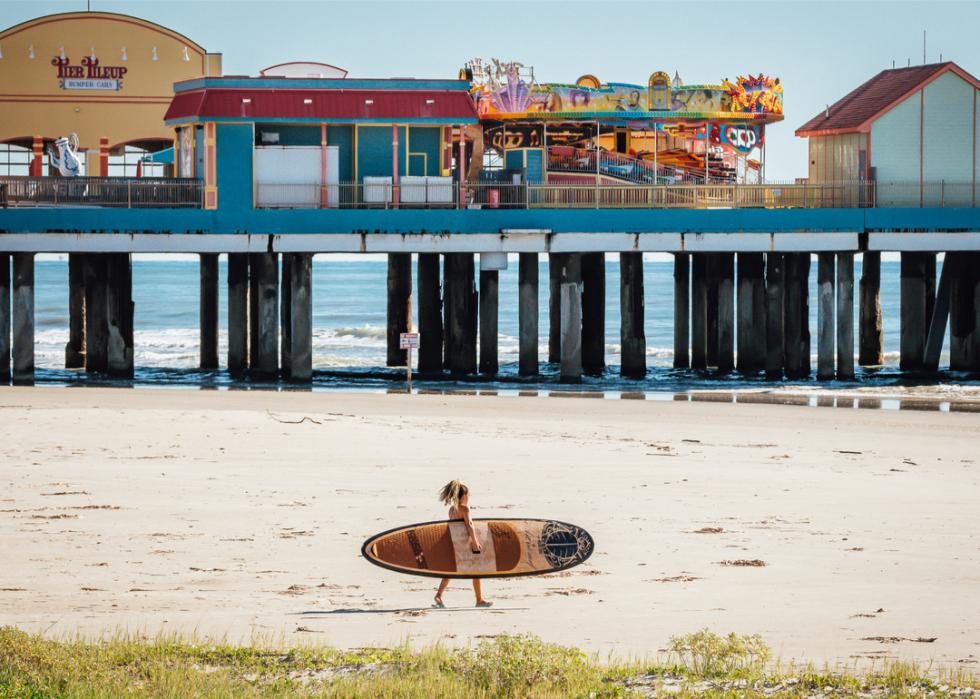
#3. Galveston, Texas
- Average relative humidity: 76.2%
- Morning average: 76.5%
- Afternoon average: 64.2%
Galveston is an island city off the coast of Texas that has seen the devastating effects of intense weather patterns. It is the site of the Great Galveston Storm, which tore through the coast in September 1900 and is still considered the worst hurricane in U.S. history. Island cities do tend to benefit from more moderate "maritime" temperatures compared to cities farther away from the coast. Galveston experiences high humidity in the summer months with relief in the form of thunderstorms. The island city continues to undergo a transformation due to man-made activities and natural forces, says The Center for Texas Beaches and Shores.
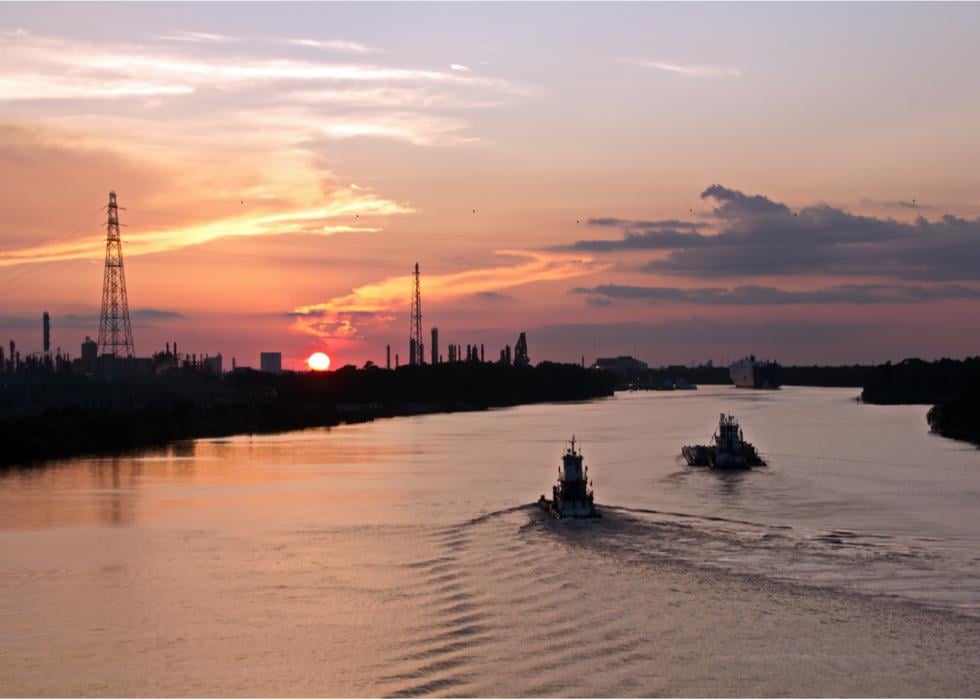
#2. Port Arthur, Texas
- Average relative humidity: 76.6%
- Morning average: 83.4%
- Afternoon average: 58%
The effects of climate change have caused an exodus from Port Arthur, a coastal city in Texas that has seen frequent storms, severe floods, and coastal erosion in recent years. These climate refugees fear that if they remain, their homes will be exposed to future environmental damage. In July 2021, the heat index hit 108 F, and a heat advisory was issued for this city. Its position on the coast, and the effects of Sabine Lake to the southeast of the city core, contribute to the humidity Port Arthur experiences all year long.
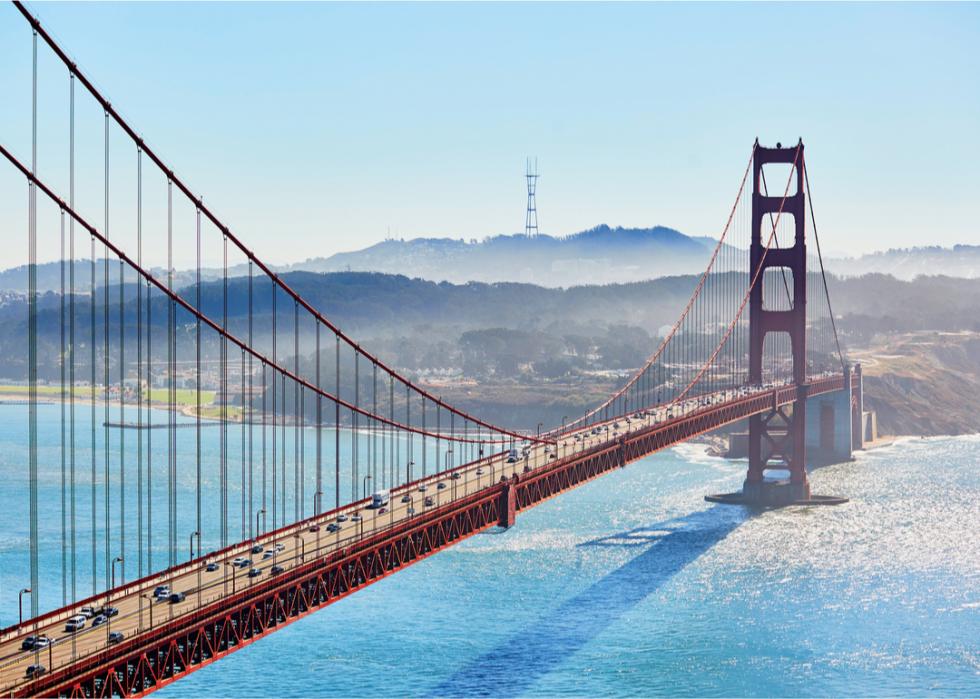
#1. San Francisco
- Average relative humidity: 77.8%
- Morning average: 80.4%
- Afternoon average: 63.2%
Topping the list of the most humid cities in America is San Francisco. This coastal city in California is as humid as it gets. The iconic hovering clouds across its skyline don't happen by accident. An excess of humidity can cause fog in the Bay Area as heat levels rise in the summer months. While the climate in San Francisco is typically muggy, with moisture slipping in from the Pacific Ocean, climate change has aggravated these conditions. Coastal flooding and the rise of sea levels pose a threat to shoreline cities like San Francisco, home of Silicon Valley and the Golden Gate Bridge.
This story originally appeared on Duradry and was produced and distributed in partnership with Stacker Studio.



